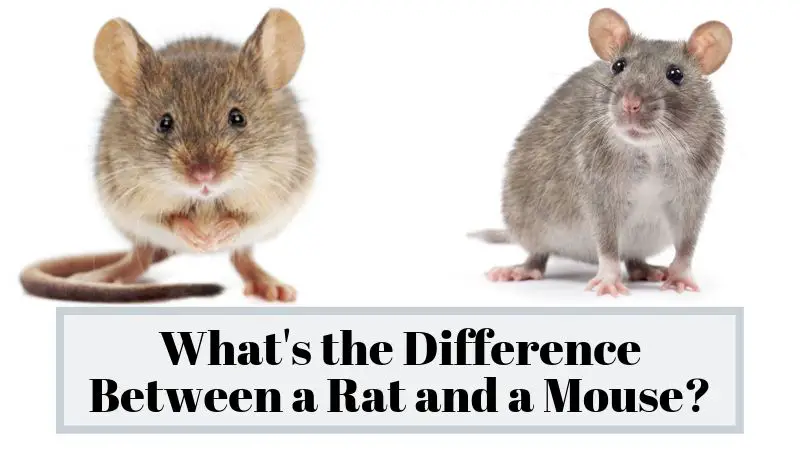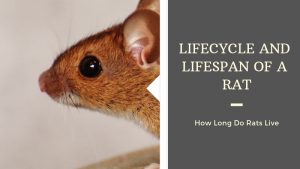Though different, rats and mice would tend to look almost identical to a novice. However, they are quite not alike. These rodents have anatomical differences apart from their nuanced visible differences. For example, a house mouse has five pairs of nipples while a rat possesses six pairs. There are 1500 different species of rodents found in the world. But, rats and mice are the ones that you usually see around human beings.
Rat vs mouse – behavioral differences
What is the basic difference between rat and mouse behaviourally, can you tell? Well, if you have noticed, a rat is far more cautious, while, a mouse is usually a curious being…yes, it’s a fact, dear readers! Let’s look at who is more curious and who is more careful below:
- Rats are careful and take very few risks in their lives. They seldom take the path that looks dangerous and out of the territory. Rats take some time to get used to a particular path and newer things.
- Mice, on the other hand, are curious and very inquisitive by nature. They will venture out to newer territories and things that interest them.
Rats vs mice – physical differences
The basic physical difference between a rat and mouse is the number of nipples possessed by each. While a rat has six pairs of nipples, a mouse possesses five. Do you wish to know some more about these creatures? Well, take a look at these interesting additional differences between rats and mice:
Morphological differences: rats, as compared to mice are heavier and weigh up to 2 lbs. Their bodies can reach 9 to 11 inches with 7 to 9 inches tail. But, mice weigh anywhere between 30 and 90 grams. Their body size reaches up to 4 inches. Rats have heavy heads with broad muzzled stouts whereas mice have heads in a triangular shape with pointed muzzles. Their heads are smaller.
The tails of rats are thickly built with smaller ears, while mice have large ears and boast of thin tails.
Let’s look at this table to find out the basic physical difference between a rat and a mouse.
| Norway rat | House mouse | Roof rat |
| It has a blunt snout | It has a pointy snout | The snout is pointy |
| Its body is thickly built | It has a light and brown body | Its body is slender |
| This rat has a brown toned body with black shading. Its coat is pretty shaggy | Grey shaded coat | Black shaded coat |
| An adult Norway rat weighs about 300 grams | These weigh about 15 grams | These weigh about 200 grams |
| It has a capsule shaped dropping | It has a rod shaped dropping | It has a spindle shaped poop |
What are the eating differences between a rat and a mouse?
It’s scientifically proven that both rodents are omnivorous beings. While house mice like to eat cereals, the black rats go for fruits and moisture filled food products. The brown rat also likes cereals. Rats consume meats too as it contains moisture.
What is the eating preference of a brown rat?
A brown rat likes to eat cereals and consumes at least 60 ml of water per day.
What do black rats prefer to eat?
These rodents like to eat fruits that are moist and consume almost 30 ml per day.
What do mice like to eat?
Mice prefer consuming cereals and seldom need water for drinking. They can survive with just 3 ml of water a day. Mice also love to binge on plants and basically anything that is easily available.
What is the breeding difference between a rat and a mouse?
- A mouse will give birth to at least 10 litters, each producing five to six baby mice. Usually, it shreds paper or cloth to build its nest. In one year, a mouse can reproduce almost 60 baby mice that start their reproduction in under six weeks’ time.
- A rat’s breeding starts only in spring. A Norway rat can bear six litters, each producing 12 babies. It takes just three months’ time till these baby rats mature and start reproducing their own offsprings.
What is the difference between mice and rats movement styles?
Mice are very fast movers. They use their hind legs to stand and tails to support their weight. Many times you will find a mouse standing on its hind legs. This is done during fights, to understand their location, and to get a proper view of something that catches its attention.
A mouse is a fast swimmer and a climber. It can climb great heights and jump along wires and cables. Mice usually run very fast and move on four legs with their tails held up. This is done for maintaining their balance when they run along treacherous paths. A mouse is most active in the night and likes to move around in the dark.
A rat is a fast swimmer and a pro at that. It can dig a hole in a building that can be as tiny as 1.2 inches. A rat can also enter a building through broken toilets as well. It likes to avoid any unknown objects that may fall in its usual path.
What are the habitat differences between rats and mice?
Rats prefer living under buildings and therefore dig a lot. These rodents are also found to be dwelling under debris. Mice prefer to live in such places that are hidden from others. They build nests in the burrows. But, they live on the ground near some source of food.
Where does a Brown rat dwell?
Brown rats prefer living both on the ground as well as burrows. They like to live inside sewer pipes. While, the Norway rat prefers dwelling in burrows, the roof rat likes to live on trees as well as walls.
Where does a black rat live?
Do you know that Black rats are known by another name? They are called ship rats because these rodents are found mainly in ships and buildings located near some port. Hence, the moniker. They build their nests on the roofs of high buildings. In warm regions, these rats are found to be dwelling in orchards.
What are mice and rat droppings?
Droppings are the fecal matter released by the mice and rats. A house that is infested with these rodents will always have droppings here and there, showing signs that it’s become a hub for these nocturnal creatures. However, the fecal matter of the black rat, brown rat and mouse differ from one another.
How to identify the droppings of a black rat?
If you see a thin and longish looking dropping, then it’s not hard to guess who the culprit is. It’s the black rat. The feces have pointed endings and are curbed like a banana.
How to identify the droppings of a brown rat?
Shaped wide, a brown rat’s dropping looks darkish brown in shade. Spindle shaped, the droppings of this rat are tapered and look a lot like rice grain.
How to identify the droppings of mouse?
Shaped granularly, the droppings of a mouse are typically black in shade and are scattered here and there when a house is infested with them. Usually, a mouse will defecate near its nest.
Do you know?
Mice trivia
- They are color blind. However, mice can smell and taste sharply.
- They release a musky smell.
- They are hardy and very tough. Do you know that mice can eat poisonous scorpions? Yes, they can bear multiple scorpion bites!
- You can find a house mouse in the top 100 world’s worst invaders list.
- Mice can outrun human beings as far as their heart rate is concerned. A heart of a mouse beats 632 per minutes whereas a human’s will beat only 60 to 100 times per minute.
- Do rats kill mice? Yes, and that is why mice are scared of them.
- Wood mice shed their tails when caught by predators.
- Mice bite but very rarely.
- A mouse can live for about 18 months.
- Humans can get allergies and sickness from mice through their urine. Ticks and fleas in mice can trigger illnesses as well.
Rats trivia
- The senses of taste, hearing, and smell are very strong in rats.
- Norway and roof rats can cohabitate in the same building.
- Rats have a bigger body with large feet and heads.
- Blessed with an excellent memory, a rat can always remember its navigation path.
- One can sense the presence of rats with certain signs such as tracks, droppings, burrows and marks.
- A rat is a clean animal that grooms itself regularly. It also grooms its other members.
- Rats are shy and avoid being near a threat.
- The tail of a rat helps it to communicate and balance. It also helps a rat to regulate its body temperature.
- The American Housing Survey conducted in 2015 concluded that 18% of homes in Philadelphia were infested with rodents.
- A rat can reach 10 inches in size.
- Rats are very social and affectionate creatures.
- Rats can swim for three days, even in toilets. When flushed down your toilet, a rat can tread its way up.
Rats and mice are members of the rodent family, but are different from each other. Both possess distinct yet strikingly similar characteristics, which may leave you trying hard to understand these creatures fully. We hope this guide helps.




